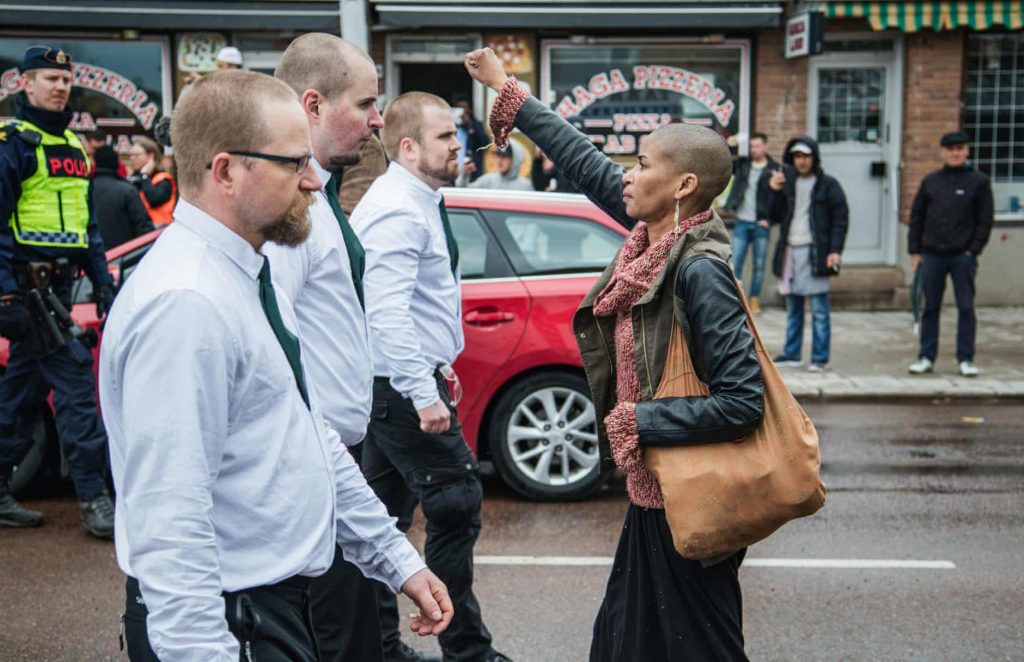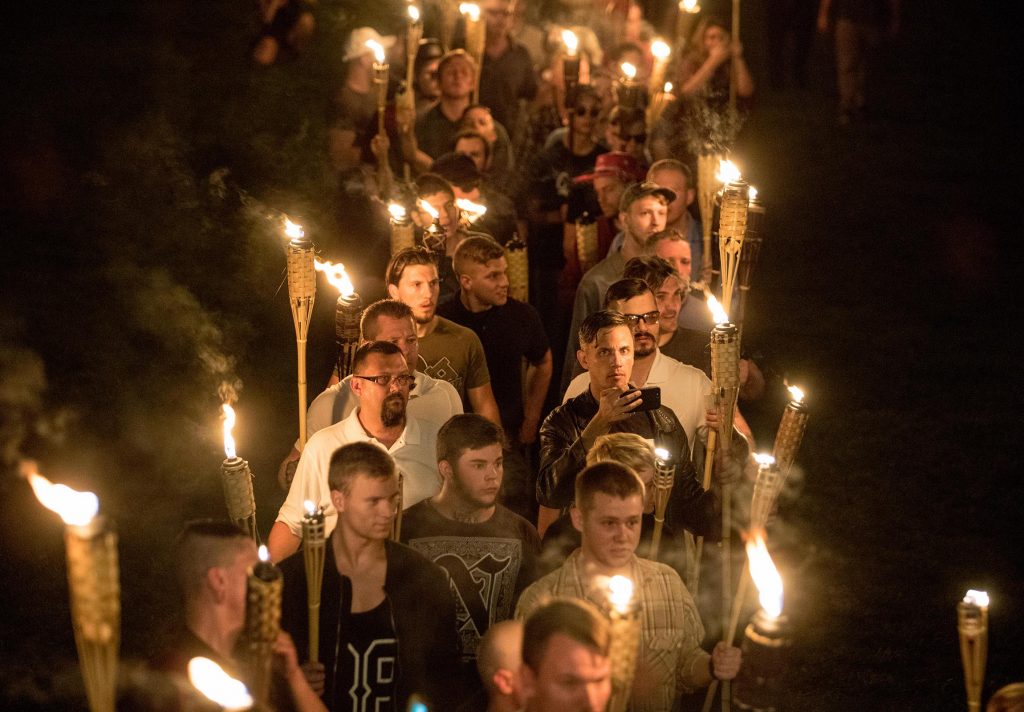“One of New Zealand’s darkest days,” is how Prime Minister Jacinda Ardern described March 15th, 2019. Fifty people were killed and another fifty people were injured by a white supremacist in two mosques in Christchurch, New Zealand. However, this was not a spontaneous attack but a problem within Western societies. Far right terrorist killings have become more frequent in the last decades. According to the Study of Terrorism and the Responses to Terrorism, a research center at the University of Maryland, this kind of terrorism could be defined as the use of “violence in support of the belief that personal and/or national way of life is under attack and is either already lost or that the threat is imminent.” Extreme-right terrorists fear “white genocide,” an idea that appeared in the 1970’s with the French “new right.” Charleston, Charlottesville or Pittsburgh are the consequence of this thinking. The perpetrators of these assaults share similar ideas – anti-globalism, racial or ethnic supremacy, nationalism, or a mix, that is, white nationalism. Nevertheless, there is something else in common: before their attacks, they have been indoctrinated on the Internet.
Hateful ideologies – misogynistic, racist, Islamophobic, anti-Semitic and homophobic ideas – spread throughout social media and online platforms have been an important factor on the rise of terrorist attacks perpetrated by white supremacists. It is the counterterrorist duty of states to disrupt the network of terrorists and fight back bigotry. Educational changes are important, but counterterrorist activities are required.
Are Far-Right Terrorists a Real Threat?
In the last decades, the belief that the Western way of life is at risk has been widespread. Immigration waves towards these countries in the last decades, along with the emergence of new cultural traditions through the fusion of previous ones, have fueled this idea. On the academic side, many authors have argued in favor of this thinking, as Samuel P. Huntington, who formulated the Clash of Civilizations. According to him, the West is declining in its relative cultural power and, in order to protect their culture, “Westerners” have to accept “their civilization as unique not universal” and unite “to renew and preserve it against challenges from non-Western societies”. However, other groups appeared with a more radical discourse. Among these collectives, some have used symbolism and ideas already employed by fascist dictatorships – as in the Charlottesville car attack. They have targeted minorities, especially racial ones, and their discourse is based on the instability of the system. They feel “left-behind” by social, political and economical changes in their countries at the same time they see how minorities are getting more social rights. Furthermore, according to their discourse, it is fault of these minorities the loss of their traditional white identity, due to multiculturalism and political correctness. Thus, minorities become the scapegoats of this narrative.

Source: Washington Post
These ideas mostly resonate with the demographic sector of the so-called “left behind” from the globalization process. However, young adults are the group most affected by this propaganda. As a research conducted by the Southern Poverty Law Center shows, disillusioned and indignant young men are the main destination of extreme right ideas. From May 2014 to January 2018 -less than four years- in the US, there have been 13 alt-right terrorist attacks and 110 people have being injured or killed by white nationalists. Likewise, it shows the main social group related with these fatal episodes: the average age of the perpetrators is 26 and all of them are men. Other studies have shown similar results as well as an important increase in the proportion of attacks carried out by far-right extremists: from 6% of all terrorist attacks during the 2000’s to 35% during the 2010’s -although they do not include other attacks, as anti-Muslim terrorism. These attacks are not are specific to the US but to Western societies in general. For instance, in the last years, Europe suffered from one of the deadliest terrorist attacks in the continent: a far right extremist in Oslo killed 77 people through a series of attacks in 2011. In addition, there has been a rise of extreme right attacks by 43% between 2016 and 2017. Last year, far-right extremists were arrested over plots to assassinate Emmanuel Macron, President of France, and Pedro Sanchez, Spanish Prime Minister. Likewise, in the last months there has been a huge emergence of cases involving accusations of racism or far-right extremism in the German “Army”.
This data shows that far-right terrorism is a real threat for contemporary societies. In that sense, it is necessary to further examine the main mechanism of indoctrination: the internet. In most of the cases, the support of these extremist ideas within the online community pushed the perpetrators into a vicious circle of alt-right fake news and hateful ideas that encouraged them to carry out their attacks. The relationship between the attacks and social media are is imminent: Two hours before the Pittsburgh shooting, Robert Bowers – the accused killer- posted anti-Semitic comments on Gab, and the Christchurch shooter posted a manifesto on 8chan filled with anti-immigrant and anti-Muslim ideas and directed the users to a page that hosted the live stream.

Source: The Guardian
Why is the Internet such a powerful weapon?
The same day Anders Breivik committed the 2011 Norway attacks, he distributed a compendium of texts entitled 2083: A European Declaration of Independence. In this book he described his right-wing extremist ideas, but the most interesting point is that he encouraged far-right groups to use social media to spread propaganda. He argued that the internet allowed people with similar thoughts get in touch, that is, share a bed for the sake of achieving common goals, and many far-right extremist networks are taking advantage of it. According to data from the Center for Strategic and International Studies, these groups are increasingly using social media and online platforms to spread propaganda, recruit members, coordinate training, organize travel trips to attend protests, raise funds, and communicate with others. Websites, social media profiles, and images and video clips posted on places such as Twitter, YouTube, Facebook, Instagram or Gab are key elements of their campaigns.
Unlike social media, 20th century technology was not so well-suited for terrorist propagandizing and recruiting. Firstly, the internet enables terrorists to communicate to a wider circle of potential extremists than they could have not reached with traditional media. Jihadist terrorism also follows this trend: decades ago radicalization required personal contact with someone -already radicalized- who could provide materials and connections to wider networks. For instance, followers of radical Islamic clerics circulated their sermons on audiotapes. Nowadays, it is not necessary thanks to the Internet. In addition to this, terrorists’ basic methodology has been to openly show their presence and disseminate their ideas on the one hand, and on the other to shift its communications and criminal behavior to protected, non-public areas of the Internet. They have used closed forums for their illegal activities, and social media to reach new sympathizers. According to the Global Terrorism Index, the Internet is the most commonly used tool for recruitment and support for terrorist organisations.
Secondly, online information look very similar and has the same reliability. An academic knowledge or an expertise is not required to write or talk about and issue, because everything has the same visual indicia of trustworthiness. There are no barriers to entry and the writing constraints are minimal, what has allowed far-right extremists to spread their ideology easily. The most influenced group by this radical ideas are young men – as it has been already said – for whom social media is the most important information source. Another important advantage of social media is that it creates a “supply chain” for terrorists’ ideas: the platforms’ algorithms connect users to content that resonates with their existing preferences. Online platforms possess personal data about their users’ inclinations, as well as algorithms that analyse this information to determine what the user wants to see, listen or read. Google, YouTube or Facebook have filter search results based on previous searches, clicks or likes, in order to increase the amount of time people stay on their platforms. As a result, there is a strengthening of the online users’ pre-existing beliefs and, in this case, it leads to a vicious circle in which they are trapped in alt-right fake news and indoctrinated in hateful ideologies.
Finally, some of the potentiality of the internet lies in its free and anonymous access to most of the web pages. The anonymity has enabled a large amount of the population to feel they may freely express their controversial views without any consequence. For instance, in the 1990’s and 2000’s, many people ended up on Stormfront – a white supremacist, anti-Semitic internet forum. They had the “positive intention” of finding a way to “feel proud of their culture and race” and discuss their concerns and problems. However, the limited framework and representation of views in these chats lead many to become indoctrinated by white nationalist ideology. In the last years, this brainwashing has moved out of online forums to be part of larger far-right campaigns, still supported by anonymous users of the world wide web. “Defend Europe” – against African migration – or “Unite the Right” rally – against the removal of the commander of the Confederate States Army’s statue – are some examples of the new cross border mobilization through the anonymity of the Internet.

Source: Washington Post
Possible Solutions?
Two days after the Christchurch shooting, the New Zealand Government agreed on banning the sale of assault rifles and semi-automatic weapons. It was a fast response, but it is not enough to fight far-right terrorist attacks. The most important target should be the indoctrination through social media, in order to penetrate in their networks, identify the terrorists and arrest them before they carry out the attacks. Despite some states, such as France or the United Kingdom, trying to put pressure on social media companies to remove content that advocates for terrorist actions, they do not focus on the fight against online indoctrination. Thus, the cyber fight must be one of the main focal points.
Far-right extremists are lone actors, but there is a connected – and active – network of white nationalists in social media, as it has been shown previously. Their movements in the worldwide web can be monitored by special agencies, to identify and prevent would-be terrorists. Governments must work closely with other governments, as well as with the private sector – social media companies and internet providers – to match the global threat of the extreme right, the same way they are already combating Jihadist terrorism. It would require large investments in expertise and engineering resources to detect this content but, especially, more international coordination of the stakeholders.
One of the main examples of these coordinated counter-strategies comes from the private sector: The Global Internet Forum to Counter Terrorism, founded by Facebook, Microsoft, Twitter, and YouTube. On their web page they explain that they look for “a shared industry database of ‘hashes’ — unique digital ‘fingerprints’ — for violent terrorist imagery or terrorist recruitment videos” and by sharing these hashes with one another, they can identify potential terrorist information on their respective online platforms.
Furthermore, governments should also focus on preventive strategies. Digital literacy programs could be one of them. Protecting the main targeted group – young people – from extreme-right manipulation should be one of the main goals and, consequently, policymakers should invest in educational programs that teach critical thinking skills, along with equality. Digital citizenship initiatives and awareness campaigns about the strategies used by the far right are needed to help internet users to identify “bots”, disinformation, fake news and other manipulation techniques. Individual awareness about online activity could be a great counter-hate method. In addition to this, there should be a more engagement with local communities: these actors could act as an early warning system of radicalization for the police.

Source: Japan Times
Extreme right terrorism has evolved through time, adapting to new contexts and using the new tools that the socio-economic and technological development has created. In that sense, there has not been a better instrument than the worldwide web for the purposes of the far right. Social media and online platforms have facilitated the recruitment of sympathizers, have secured their communications and have protected the extremists under the anonymity of the Internet. As a result, there must be a focus on the cyber counterterrorism. International public-private collaboration must be improved with the aim of identifying possible terrorists and removing hateful content. Likewise, educational campaigns about the use of ICT’s could create social awareness in relation to manipulation techniques.
Thousands of people have died or have been injured by these far-right terrorists, indoctrinated by extremist networks. Stopping the dissemination of hateful ideas online is an essential requirement to stop these terrorist attacks and protect minorities.
Featured Image Source: El Español